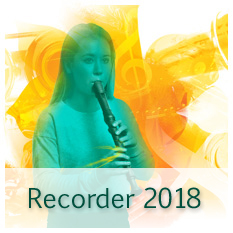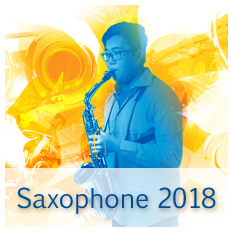New ABRSM Woodwind Syllabus 2018

Forwoods ScoreStore is delighted to introduce the new ABRSM Woodwind syllabus, launching in July for use in exams from January 2018. The repertoire for all woodwind instruments has been refreshed - Flute, Clarinet, Saxophones, Recorders, Oboe and Bassoon. The ABRSM are offering a wider choice than ever before, including famous classical tunes and music from film, TV and musicals.
Also being revised are the sight-reading tests and scale and arpeggio requirements to ensure these important sections of the exam encourage and support progression while reflecting the everyday experiences of teachers and learners.
New publications
The syllabus and a wide range of new supporting publications will be published on 6th July 2017, and are available to pre-order now from Forwoods ScoreStore. There are some significant changes to the publications being made available this time, so here's a little more information on the new books:
Exam Pieces - collections of 9 pieces from lists A, B and C in a range of appealing styles, including piano accompaniment and unique audio download codes to access recordings. Available for Grades 1 to 7 (Flute and Clarinet) and, for the first time, Saxophones at Grades 1 to 5.
*NEW* Exam Packs - bringing together the 9 selected exam pieces (along with piano accompaniment and audio download codes), scales and arpeggios and sight-reading material in one convenient place. Easy to use, and available for Flute, Clarinet and Saxophones at Grades 1 to 5.
New Scales & Arpeggios books for all instruments, completely revised, and new Sight-reading books with practice tests in attractive and approachable styles.
All the new publications are available to pre-order now; click the instrument below to see the full range and order your copies today!
Revised sight-reading
The new sight-reading tests are designed to ensure they encourage and support progression, while reflecting the needs and experiences of teachers and students.
The new tests have been written in a range of familiar and accessible styles to give candidates an opportunity to demonstrate their musical skills and knowledge.
At the early grades, tests are now shorter, while at Grades 6 to 8 the introduction of descriptive titles is designed to help candidates connect with the mood and style.
At all grades there is now consistency between Woodwind instruments with musical features introduced at the same point. The Woodwind sight-reading requirements also now match those for other instruments we’ve reviewed recently, such as Bowed Strings.
For the first time, the syllabus includes the main sight-reading parameters for all grades. This means that teachers can easily see the progression of requirements, including keys, length of test, time signatures and range.
Revised scales and arpeggios
The scale requirements for all Woodwind instruments have been reviewed and rationalised.
From Grade 3 onwards there are fewer scales and arpeggios to learn at each grade. Then at Grades 7 and 8 we have moved away from an ’all key’ approach to one which focuses more on technical development and consolidation. Generally there is less repetition and more focus on progression, with all keys covered at least once across Grades 6 to 8.
Other changes are:
- Dominant sevenths will now resolve on the tonic to show harmonic context.
- The ‘to a 12th‘ range is used for all instruments as a stepping stone between 1- and 2-octave requirements, giving smoother progression and development of range.
- Grade 6 – we are setting five note centres (where major and minor scales and arpeggios start on the same notes). Three of these will be used as starting points for chromatics and dominant and diminished sevenths. We are also introducing a 1-octave scale in thirds.
- Grade 7– will contain another set of five note centres. Four of these will be used as starting points for chromatics and dominant and diminished sevenths. We are also introducing an extended-range scale and a 2-octave scale in thirds (1-octave for recorder).
- Grade 8 – will contain another set of five note centres, plus two whole-tone scales, alongside further examples of scales in thirds and extended-range scales, now with their arpeggios.
Resources for scales and sight-reading
The new publications for sight-reading and scales are all available to pre-order now using the links above.
Woodwind syllabus overlap period
There will be no overlap period for sight-reading or scales and arpeggios. The new requirements will apply from 1 January 2018 in all countries.
The usual overlap period will apply for pieces from the old syllabus, which candidates can play until Spring 2018 in the UK and Ireland, and until 31 December in all other countries.






